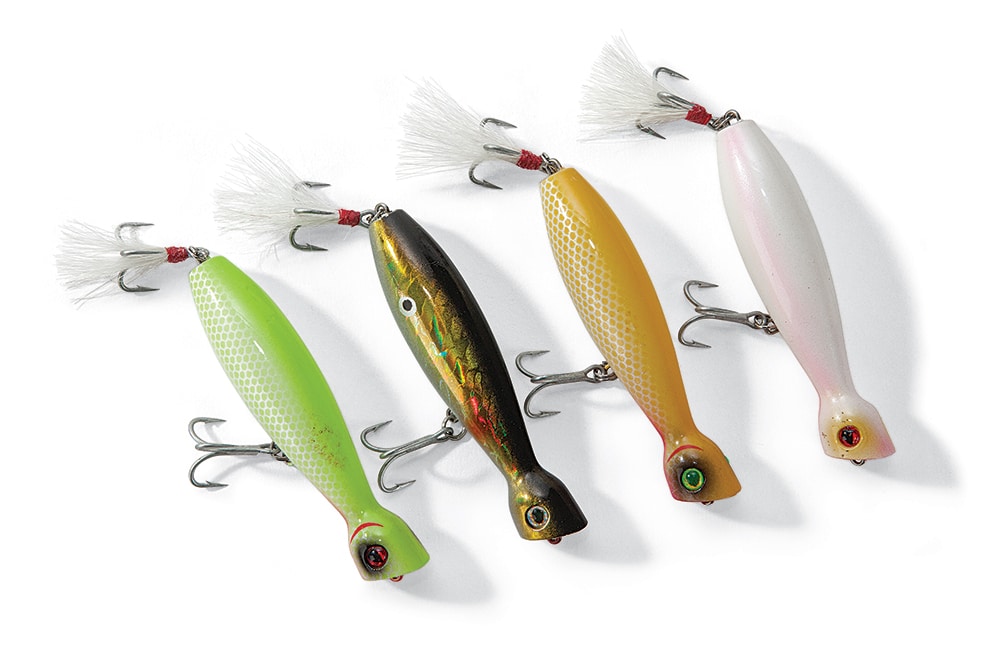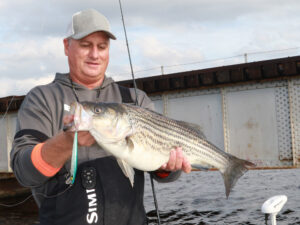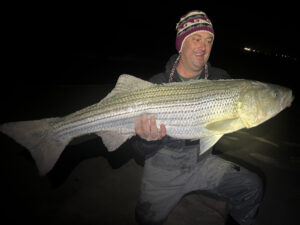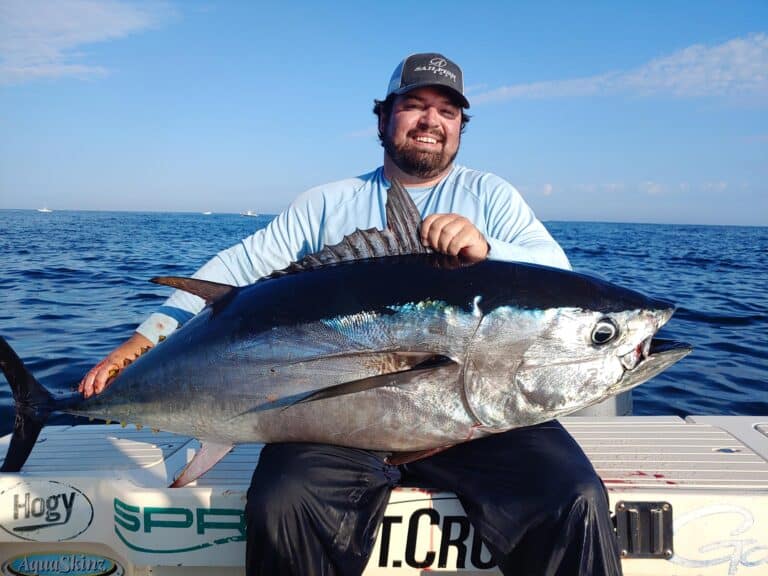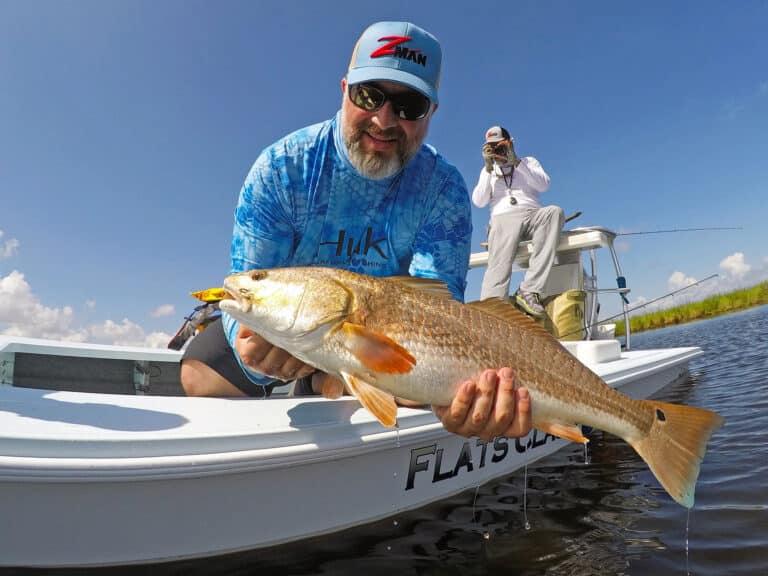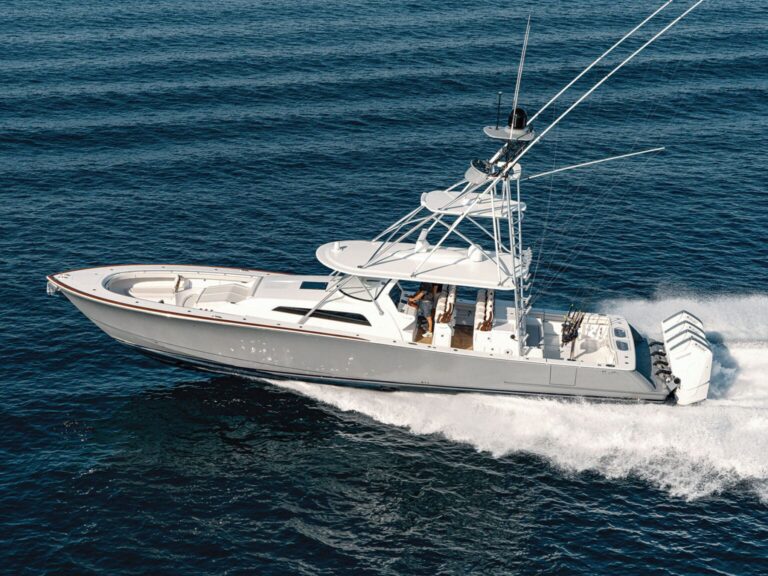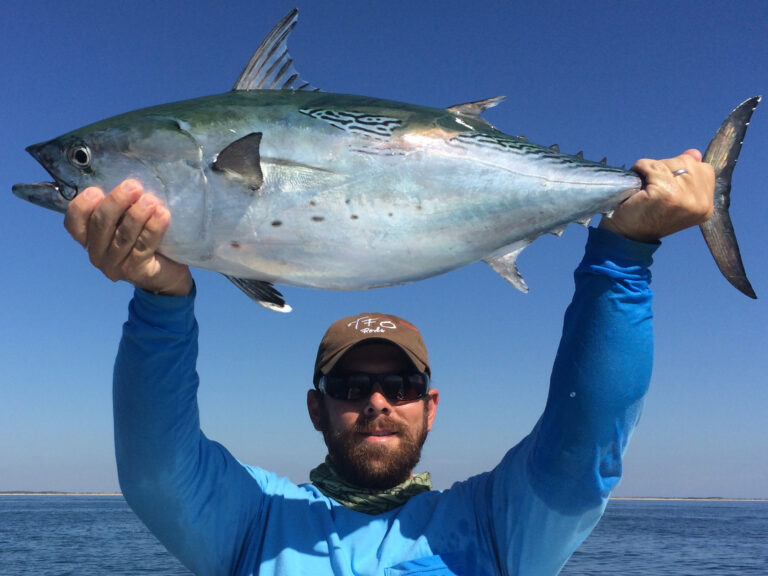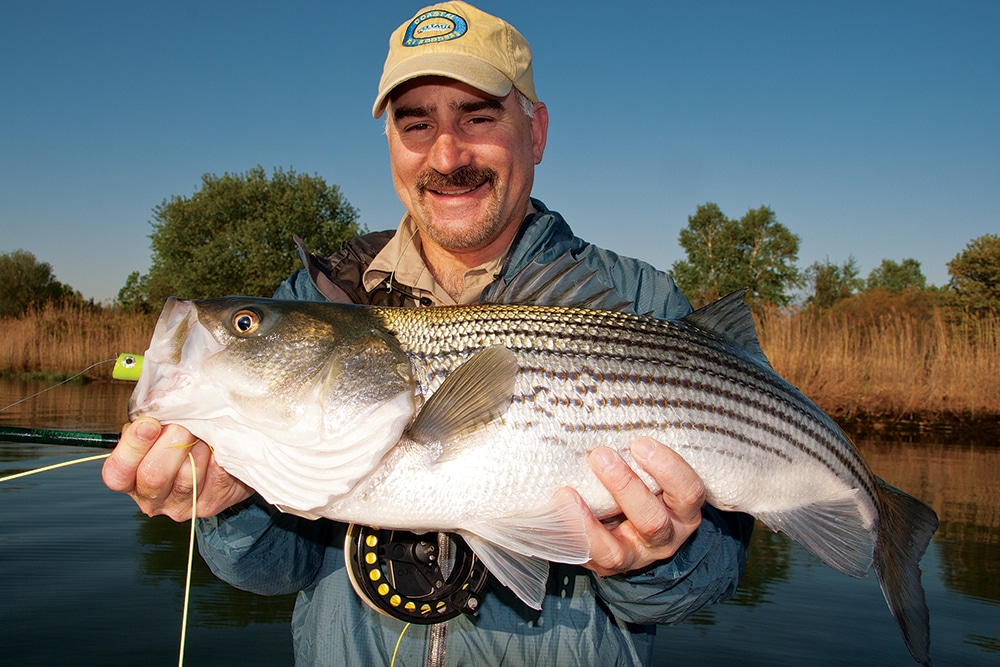
Gluttons for Grass Shrimp
(Be sure to click through all the images in the gallery above.)
The first of the year’s 70-degree days had us optimistic. The skiff skipped across the surface, and we took a hard left from the channel toward the flats. A colder-than-average April had been a bust, with the only fish around deep and uncooperative. We wanted to shake those cobwebs.
Immediately we saw terns diving near a salt-marsh creek. I killed the engine 100 yards from the mouth as tiny baits pogo-sticked on a mirrored surface. Soon there was the distinctive “pop” of a grass shrimp getting sucked down. Game on!
Strength in Numbers
When you pick a grass shrimp, it doesn’t look like much. The delicate, translucent creatures are discernable only by a series of brown-red lines circling the body and two black eyes. Generally they don’t run more than an inch long, but occasionally you’ll find some larger. Grass shrimp are not something you’d think would instigate a serious striped bass feed, or attract large weakfish, but indeed they do. When the shrimp emerge in spring, they occur in great numbers. And in many areas, they’re the first bait to kick-start a season.
A good hatch involves thousands and thousands of specimens. Whether the grass shrimp explosion is an actual hatch is questionable. Available science suggests that grass shrimp spawn throughout spring and late summer. As far as I can tell, there isn’t a definitive season. Still, given the sheer volume of baits, when it goes off, the use of the term “hatch” is appropriate. (Over the years, hatch has morphed to mean a sudden occurrence of massive amounts of small baits.) At any rate, tons of shrimp show each spring in New York and New Jersey waters after a dormant period.
Where are you likely to see such concentrations of grass shrimp?
They don’t call them grass shrimp for nothing. They aren’t exclusive to salt marshes and estuaries — we do see them on the sand flats — but I can say that the largest concentrations of swarming shrimp happen most often near salt marshes. Really, it’s all about submerged vegetation such as eel and spartina grass.
The diminutive shrimp are a very important component in salt-marsh systems, where they eat detritus, algae, phytoplankton, small invertebrates and dead-plant material. They serve a critical ecosystem function in the food chain, converting such small organic matter into food for predators. Just about everything that swims, flies or crawls eats grass shrimp.
These shrimp are also structure oriented, and that structure certainly isn’t limited to submerged vegetation. Without a doubt, they gravitate to man-made objects too. I collect shrimp for my saltwater tank by dragging a small mesh net along pilings.
Prime Real Estate
You’re likely to find shrimp hatches in any salt-marsh flat from New Jersey to Rhode Island, but the bulk of such concentrations appear to occur from central Jersey to Eastern Long Island. The darker the bottom (dark bottom exposed to sunlight warms faster), the more likely you’ll find hatches early in the year. Sure, you’ll see grass shrimp in deeper water, but the large aggregations happen in 4 feet or less.
So where are the predators feeding? Every good Atlantic Coast angler knows how to use current, and this is particularly relevant when dealing with baits that aren’t strong swimmers. East Hampton guide Capt. David Blinken correctly notes that fishing shallow creek mouths in the marsh during an outgoing tide is a good place to start. Massive numbers of shrimp will flood out of the creek with the ebbing tide, and stripers and weakfish set up shop picking them off.
Connecticut guide Capt. Ian Scott Devlin notes that any place you see large concentrations of grass shrimp during the day, extensive feeding is likely at night. He likes to fish structure such as pilings or finger piers. Structure in or around marshes load up with shrimp, and if such an area has current, it’s likely predators will take advantage after dark.
“During the night, I’ll look around those artificially lit areas,” says Devlin, “and then I’ll fish the shadow lines where stripers and weakies are likely to ambush.”
Devlin also focuses on bends in creeks. “As the tide flows, fish can just sit there and sip,” says Devlin. “If it’s a spot where you’ve got artificial light at night, that’s even better.” Culvert pipes or bottlenecks under bridges can be outstanding, notes Devlin.
Sight-Fishing, Sand Flats and Eelgrass
Sight-fishing for stripers is a blast, even more so when you get shots at weakfish. Grass shrimp have a lot to do with this. I mentioned that we see shrimp on the sand flats, but that’s really the result of adjacent eelgrass beds. Being weak swimmers, shrimp drift off the eelgrass with the current and onto the sand flats. This works out well for a number of reasons.
One is that there aren’t tremendous amounts of grass shrimp over sand when compared with marsh flats. In this scenario, you can toss grass-shrimp imitations at cruising fish, and they will eat them.
Two, stripers tend to cruise the edge where the eelgrass bed stops and the sand flat begins. That makes it easy for sight-casters to have a definitive place to look. More important, stripers stand out against the sand. Stripers tend to acclimate their coloring to their surroundings, so they appear darker after spending time on eelgrass beds. When they swim across a sand flat, they’re easy to spot.
Match the Hatch?
There are different schools of thought on how to fish a grass‑shrimp concentration. It’s intuitive that one would want to “match the hatch,” and certainly you may have success with small baits that closely resembles a grass shrimp. Yet, when one of these swarms goes off, there are thousands of baits in the water. So even if you have the best artificial bait in the world, or even live bait, getting noticed among thousands of others isn’t easy.
“Any time you get mass food sources,” says Devlin, “something drastically bigger usually produces.”
Devlin is quick to point out that it really depends on the mood of the fish. Indeed, there are times where stripers roll and sip shrimp at the surface but won’t strike your perfectly placed presentation. When that happens, I try to shake things up to get attention. That means fishing a popper, or anything that’s likely to push a lot of water and make noise.
Striped bass are such aggressive fish that if something is making noise on a flat, they just have to punish it. They simply can’t resist. Sometimes I feel like they aren’t even trying to eat it. During small-bait hatches, you’ll get a lot of tail-slaps, boils and other attempts, but the fish are just “punishing” rather than “eating.” You’ve got to have crazy will power when this happens. That means not trying to hook-strike on a fish after every boil, and letting it sit there for three or four seconds before beginning your retrieve. During such retrieves, stripers will eventually find the hook on that stunned, obnoxious noisemaker.
What Works
Fly-fishers have a distinct advantage for casting to stripers and weakfish during shrimp hatches. For one thing, they can keep a fly suspended longer than with a heavy lure cast using spin gear. Real grass shrimp swim suspended in the water most of the time. Plus, assuming you need to match the hatch, flies generally do a much better job. Take a look at Bob Popovics’ Ultra Shrimp fly — it’s about as close to the real thing as you can get. Furthermore, when the fish seem to be very skittish, laying a fly out on the water is often much less intrusive than casting baits. Keep in mind that any time you fish a grass-shrimp imitation, your retrieve should be very slow and erratic.
As far as attention-getters go, you’ll want something small that makes a lot of noise. I tie a 2/0 Boiler Maker foam popper with a few feathers or bucktail on the back of a 4/0 hook. Perhaps one of the best flies to use during a grass-shrimp hatch is the Gartside Gurgler tied in tan or dark brown. This fly is small and can be tied to look just like a grass shrimp. When stripped through the water and then paused, it makes appealing splashes that attract lots of attention. Grass-shrimp hatches are awesome: Be prepared, know how to fish them, and you will be rewarded.
Create Your Own Hatch
Some tackle shops sell live grass shrimp by the quart.
“For a full tide, you’ll need four or five quarts,” notes Barnegat Bay’s Capt. Gene Quigley.
He recommends anchoring up off of a sod bank or creek mouth, and then “spiking the water” by tossing in eight or 10 shrimp at a time. Quigley uses a bobber system, putting one or two shrimp on a No. 2 or 4 hook, 4 to 6 feet down, and drifting it back in the slick. He also recommends a small, ³⁄8-ounce bucktail, impaling a couple of shrimp on the hook and slowly working it back through the slick.
About the Author Capt. John McMurray is the owner and operator of One More Cast Guide Service (nycflyfishing.com) in Jamaica Bay, New York. He is also the director of grant programs at the Norcross Wildlife Foundation and represents New York Anglers on the Mid-Atlantic Fishery Management Council.
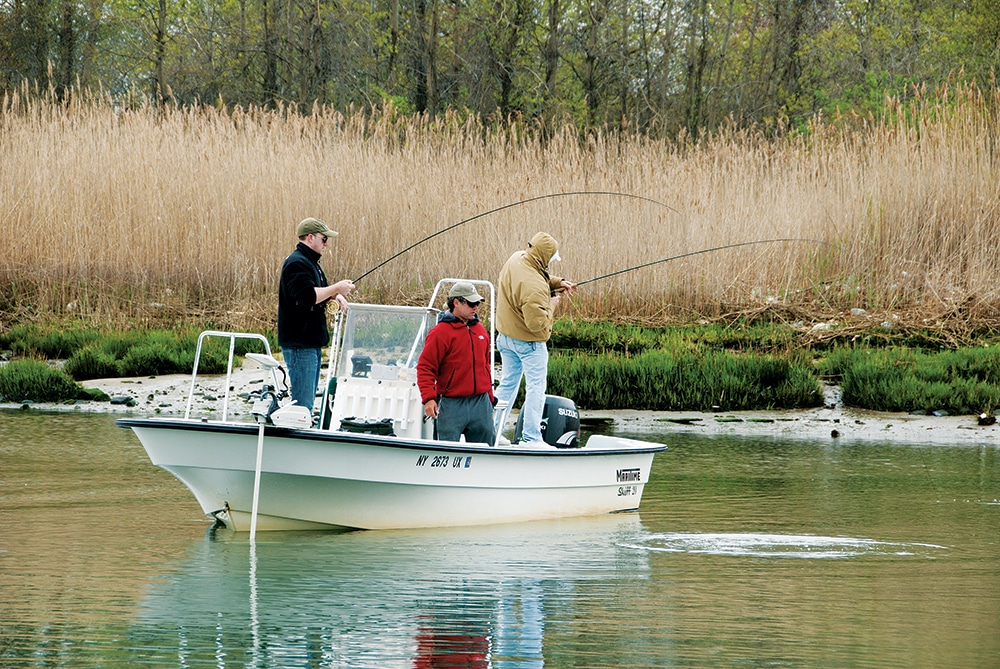
Gluttons for Grass Shrimp
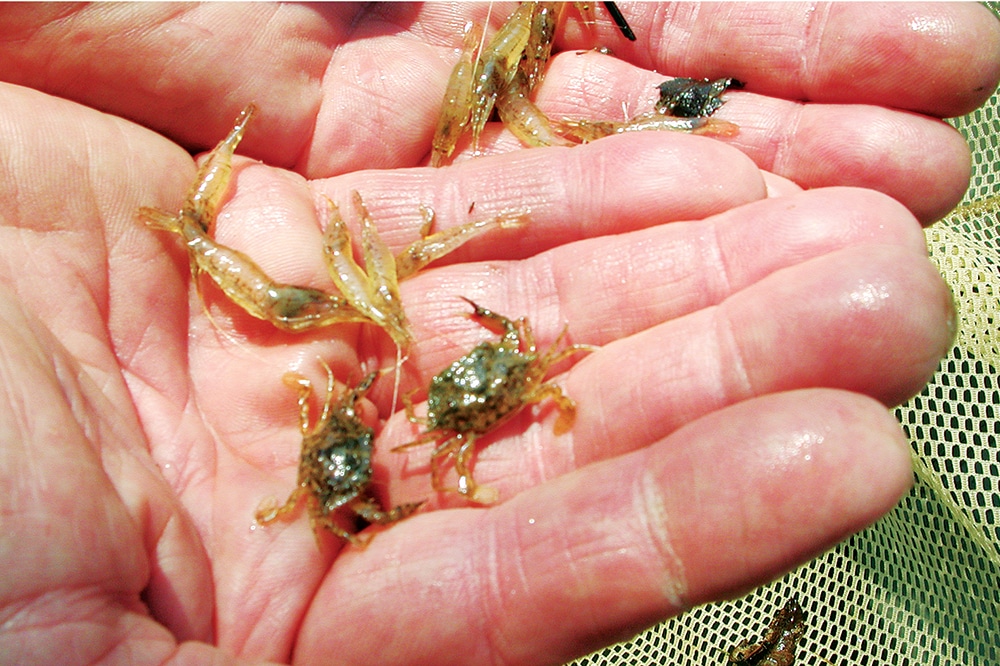
Gluttons for Grass Shrimp
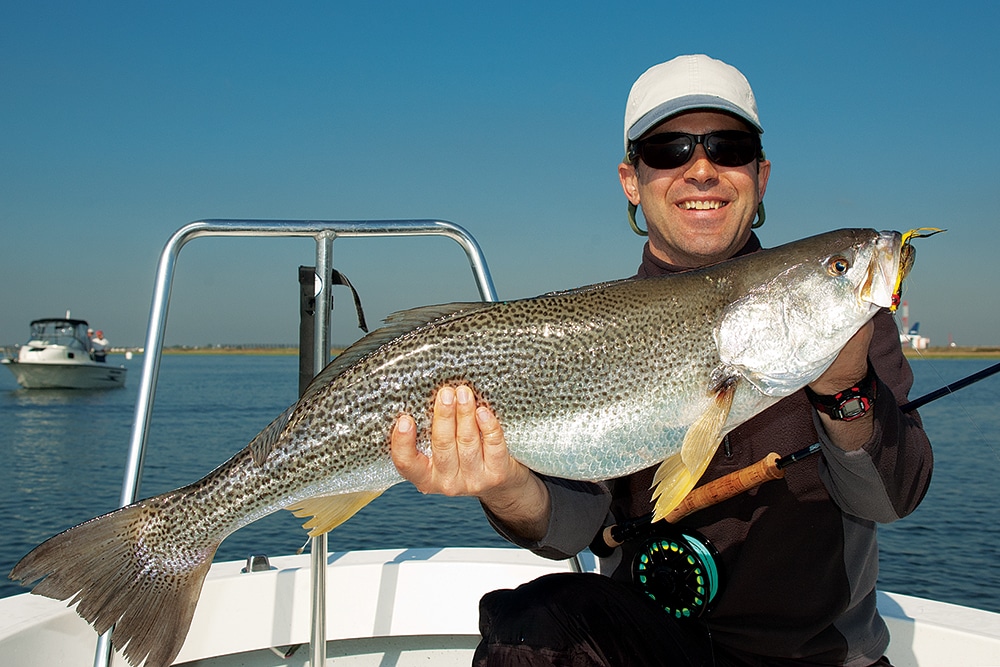
Gluttons for Grass Shrimp
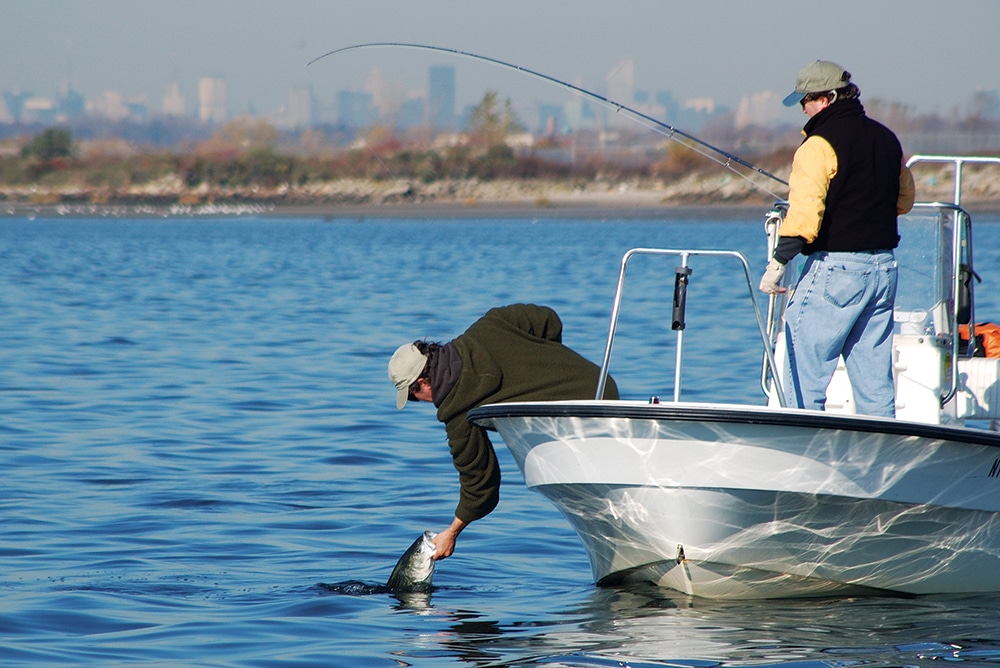
Gluttons for Grass Shrimp
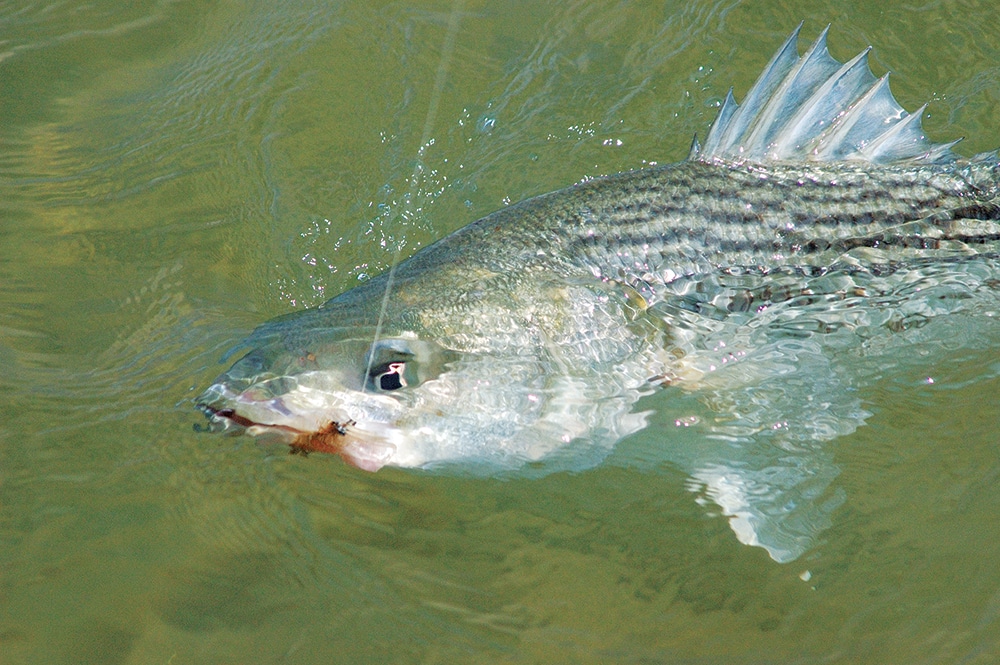
Gluttons for Grass Shrimp
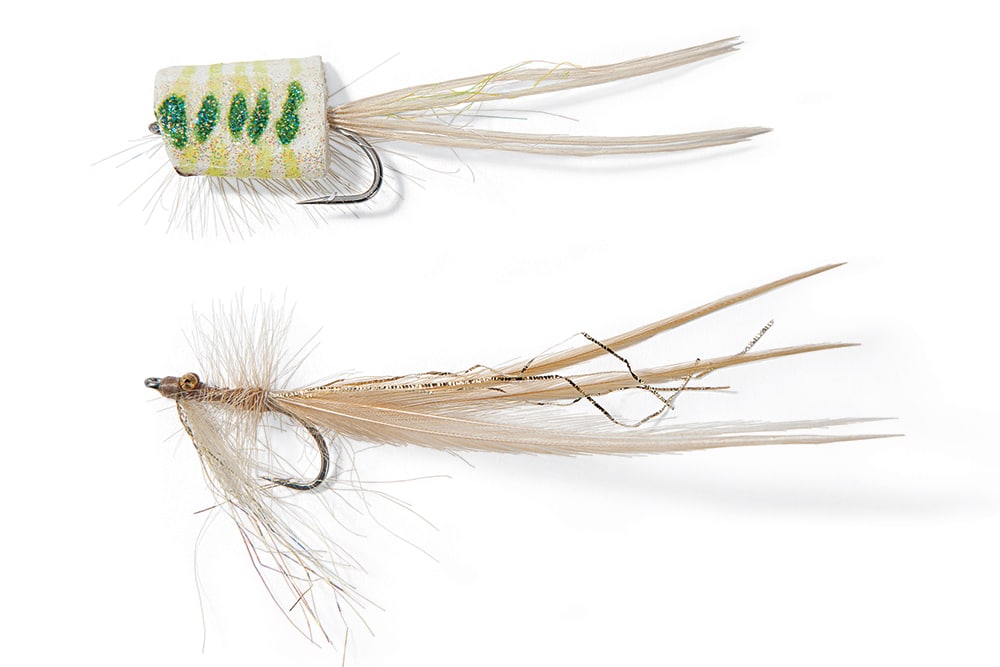
Gluttons for Grass Shrimp

Gluttons for Grass Shrimp
